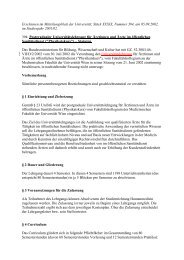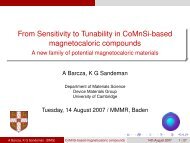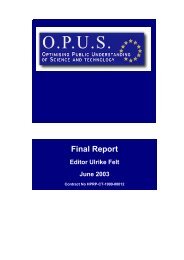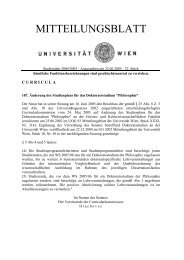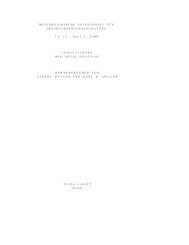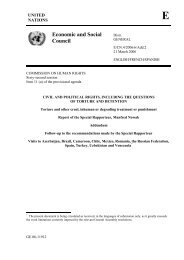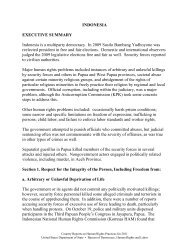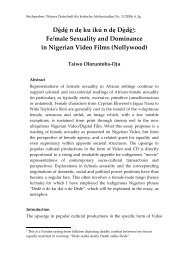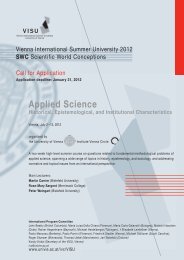(Stand: 25. Juli 2007) ANDERSON, Michael Alan ... - Universität Wien
(Stand: 25. Juli 2007) ANDERSON, Michael Alan ... - Universität Wien
(Stand: 25. Juli 2007) ANDERSON, Michael Alan ... - Universität Wien
Create successful ePaper yourself
Turn your PDF publications into a flip-book with our unique Google optimized e-Paper software.
MEDIEVAL & RENAISSANCE MUSIC CONFERENCE <strong>2007</strong> – WIEN, 7.-11. AUGUST ABSTRACTS<br />
tions. The nexus that permits us to understand the full significance of the relevant musical<br />
compositions is provided, sometimes thinly sometimes very amply, by the personal<br />
histories of the composers. Most compelling in this connection are the known interests<br />
and designs of their patrons and the patterns of imitation in the Susanna pieces themselves,<br />
where we find it reflecting the broad scope of interest in Mary’s cause.<br />
� �<br />
SPILKER, John D. (Florida State University)<br />
Rex autem David et al: The Transformation of Absalom during the Sixteenth Century<br />
Freitag/Friday, 10.8., 17.00 Uhr, MuWi, HS 1<br />
My recent research has brought to light over two hundred musical settings based on<br />
David’s lamentation for his son Absalom that date from the ninth century into the<br />
twenty-first century. These pieces exist as part of tradition of composers choosing to set<br />
these similar sacred texts. This paper traces the medieval origins of this tradition and examines<br />
the changing function of these musical settings during the sixteenth century by<br />
evaluating the various texts used by sixteenth-century composers.<br />
Ultimately, the texts of David’s lamentation derive from the Bible (2 Samuel 18:33<br />
and 2 Samuel 19:4). The first musical setting, Rex autem David, originates from medieval<br />
antiphonals and its function was liturgical. One other known musical setting from the<br />
medieval period, an anonymous fourteenth-century polytextual motet, Doleo super<br />
te/Absalon, fili mi, unites the text of David’s lament for Absalom with David’s similar lament<br />
for his friend Jonathan. During the sixteenth century, several Catholic composers<br />
used the text of the liturgical antiphon, Rex autem David, for polyphonic motets. It is likely<br />
that these settings were used to replace the liturgical monophonic antiphon. In contrast to<br />
these liturgical settings, other sixteenth-century composers wrote Latin polyphonic motets<br />
based on the biblical accounts of David’s lamentations and poetic interpretations of those<br />
texts. Since these settings do not use a liturgical text, scholars have suggested that their<br />
function was to mourn the death of the son of an important historical figure. The tradition<br />
of David’s lamentations that developed during the sixteenth-century crossed political,<br />
religious, and linguistic boundaries in Europe. These trends of transformation demonstrate<br />
that this sacred Latin text transcended its original liturgical function, serving other<br />
purposes through its ability to speak directly to the human condition across time, place,<br />
and specific circumstances.<br />
� �<br />
- 70 -




